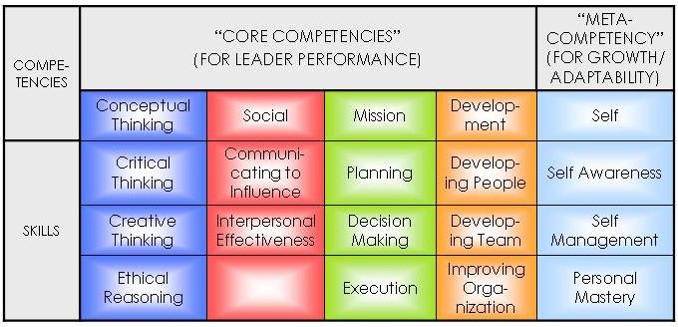SAF Leadership Competency Model


1. Conceptual Thinking Competency Conceptual Thinking is the cognitive capacity to understand and respond to the complexities inherent in the SAF operating environment, including making sense of the moral and ethical dilemmas that may arise. Conceptual thinking consists of Critical Thinking, Creative Thinking and Ethical Reasoning skills.
2. Social Competency This competency domain refers to the skills required to develop and maintain effective working relationships by showing consideration, concern and respect for others. This competency consists of two skills: Interpersonal Effectiveness and Communicating to Influence.
3. Mission Competency The SAF leader is a mission-focused individual. He understands the intent of the mission and efficiently plans to ensure a successful outcome. This competency consists of three skills: Planning, Decision Making and Execution.
4. Developmental Competency The SAF leader develops his team/subordinates through effective coaching and mentoring, providing the catalyst for change and champions change efforts at the organisational level. This competency consists of 3 skills that address building capacity at three levels: Developing People (individual), Developing Team and Improving Organisation.
5. Self Competency This competency refers to skills required to manage oneself and develop one’s own capabilities. The 3 main components are Self-awareness, Self-management and Personal Mastery. For this competency, the behaviour indicators would be common across all 3 levels of leadership (direct, organisation, strategic).